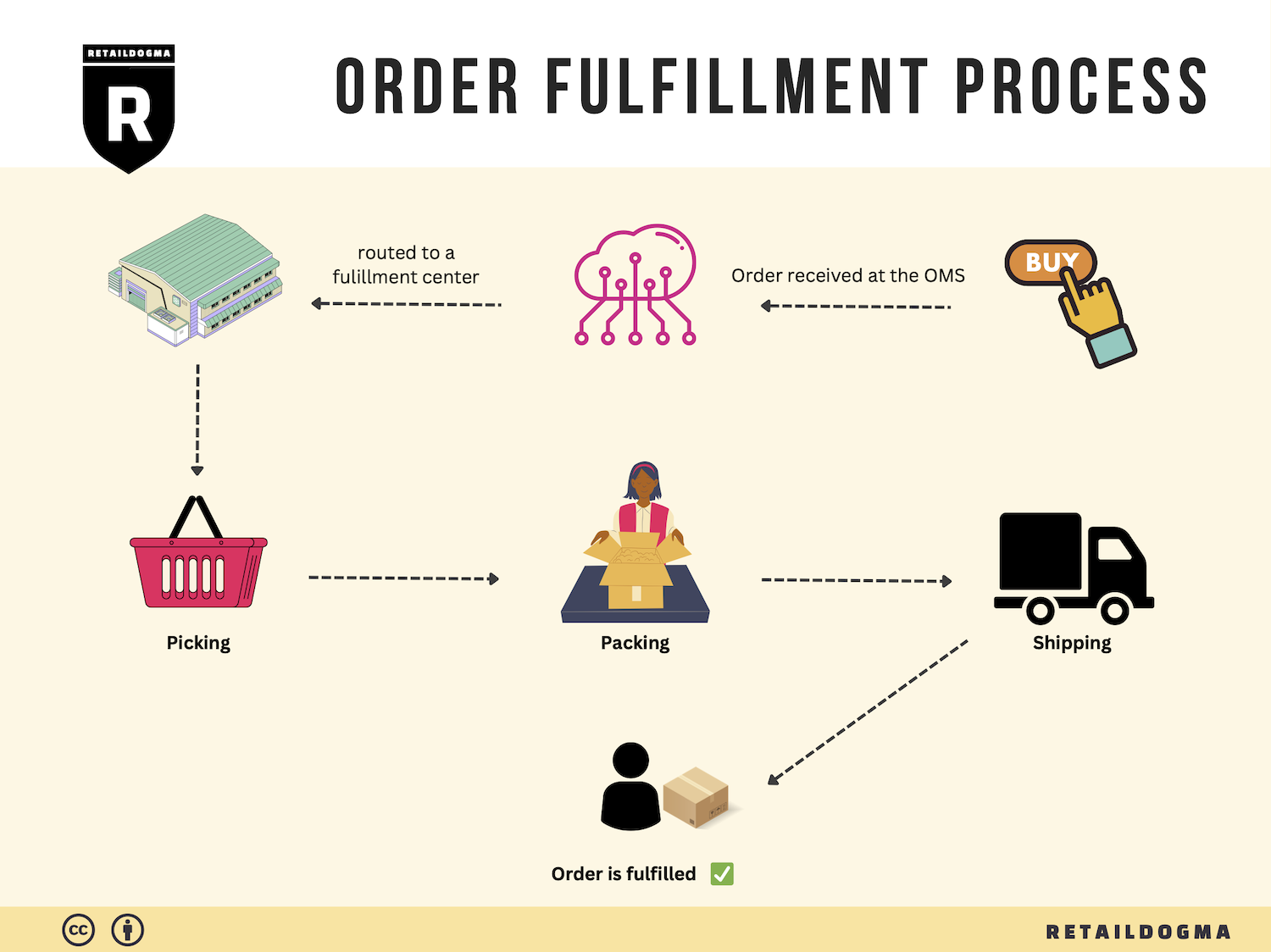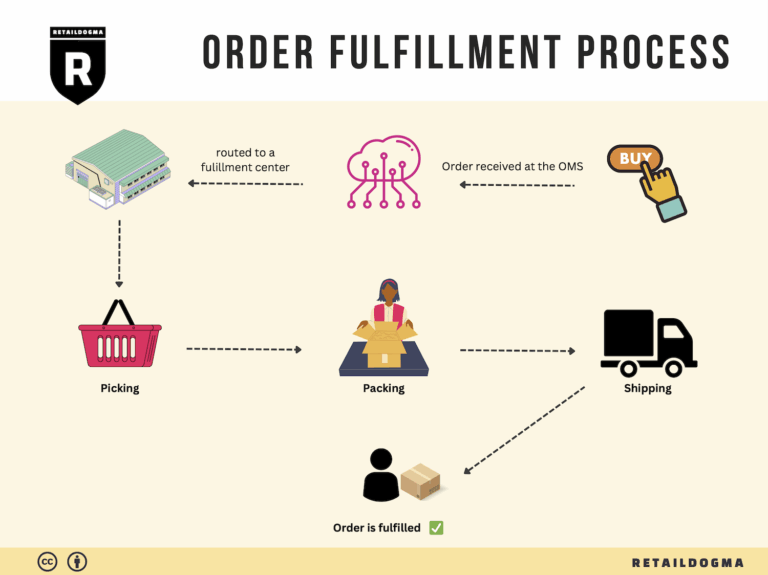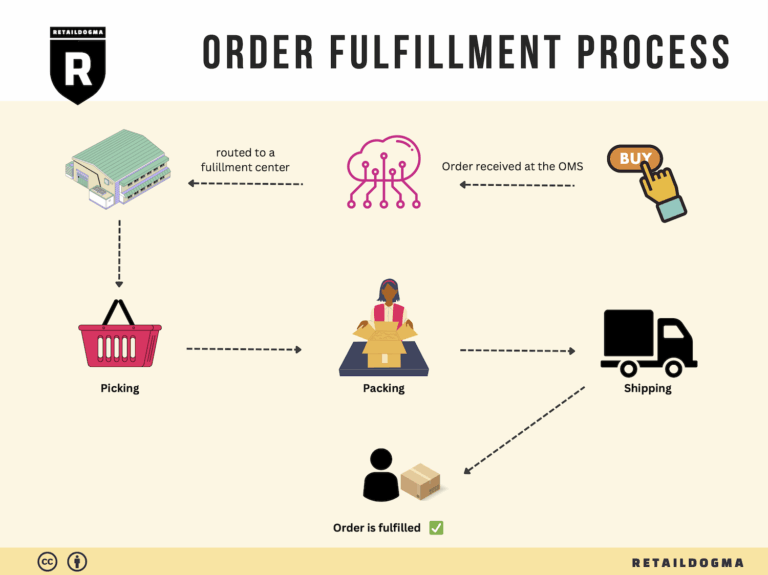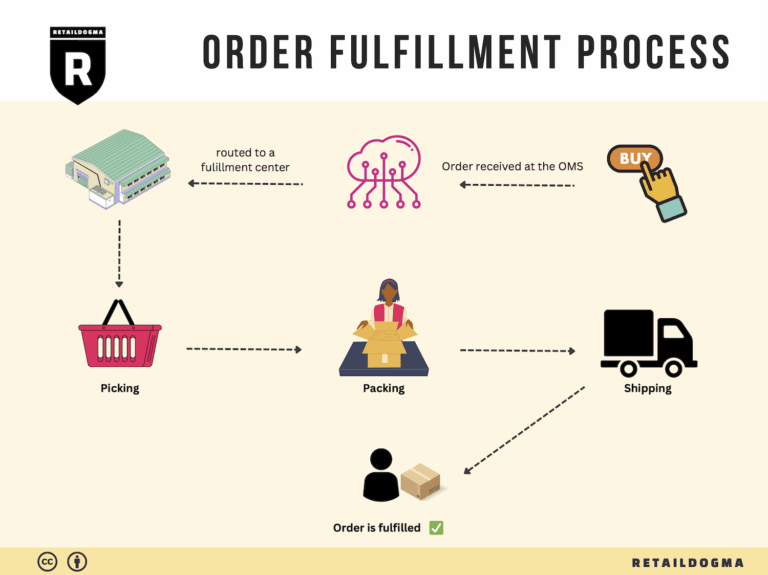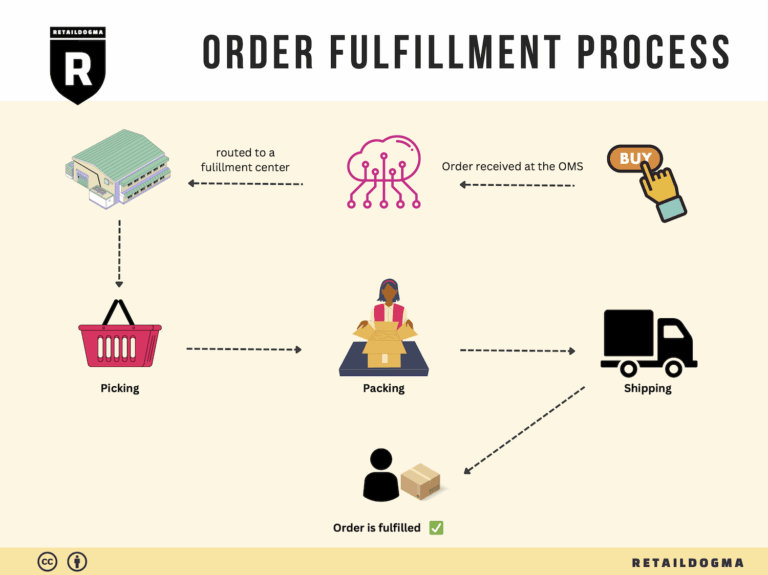Ecommerce Fulfillment Services: The Ultimate Guide (2025)
What is E-commerce Fulfillment? An Introduction for Growing Businesses
Understanding E-commerce Fulfillment
As an e-commerce business owner, you may find yourself grappling with the overwhelming tasks of packing and shipping orders. Managing inventory, ensuring timely deliveries, and maintaining customer satisfaction can quickly become a daunting challenge as your sales grow. This is where effective e-commerce fulfillment comes into play—streamlining the process of getting your products into the hands of customers.
At its core, fulfillment refers to the entire process involved in delivering a product to a customer after an order is placed. It encompasses various steps including inventory management, order processing, packing, shipping, and returns handling. For growing businesses, understanding and optimizing this process is crucial for scaling operations without compromising service quality.
In this guide, we will explore the different fulfillment models available to e-commerce businesses. You’ll learn about traditional options such as Third-Party Logistics (3PL) providers and popular solutions like Fulfillment by Amazon (FBA). Each model has its own advantages and can cater to different business needs, whether you’re a small startup or a larger operation looking to expand.
We will also delve into the core services that fulfillment partners typically offer, including warehousing, order processing, and shipping logistics. Knowing what services are available can help you identify a partner that aligns with your business goals.
Choosing the right fulfillment partner is pivotal for your success. We will provide practical tips on what to consider when selecting a logistics provider, including factors such as reliability, technology integration, and customer service capabilities.
Furthermore, pricing is a critical aspect of fulfillment that often confuses businesses. We will clarify the various pricing structures you may encounter and help you understand how to evaluate costs effectively.
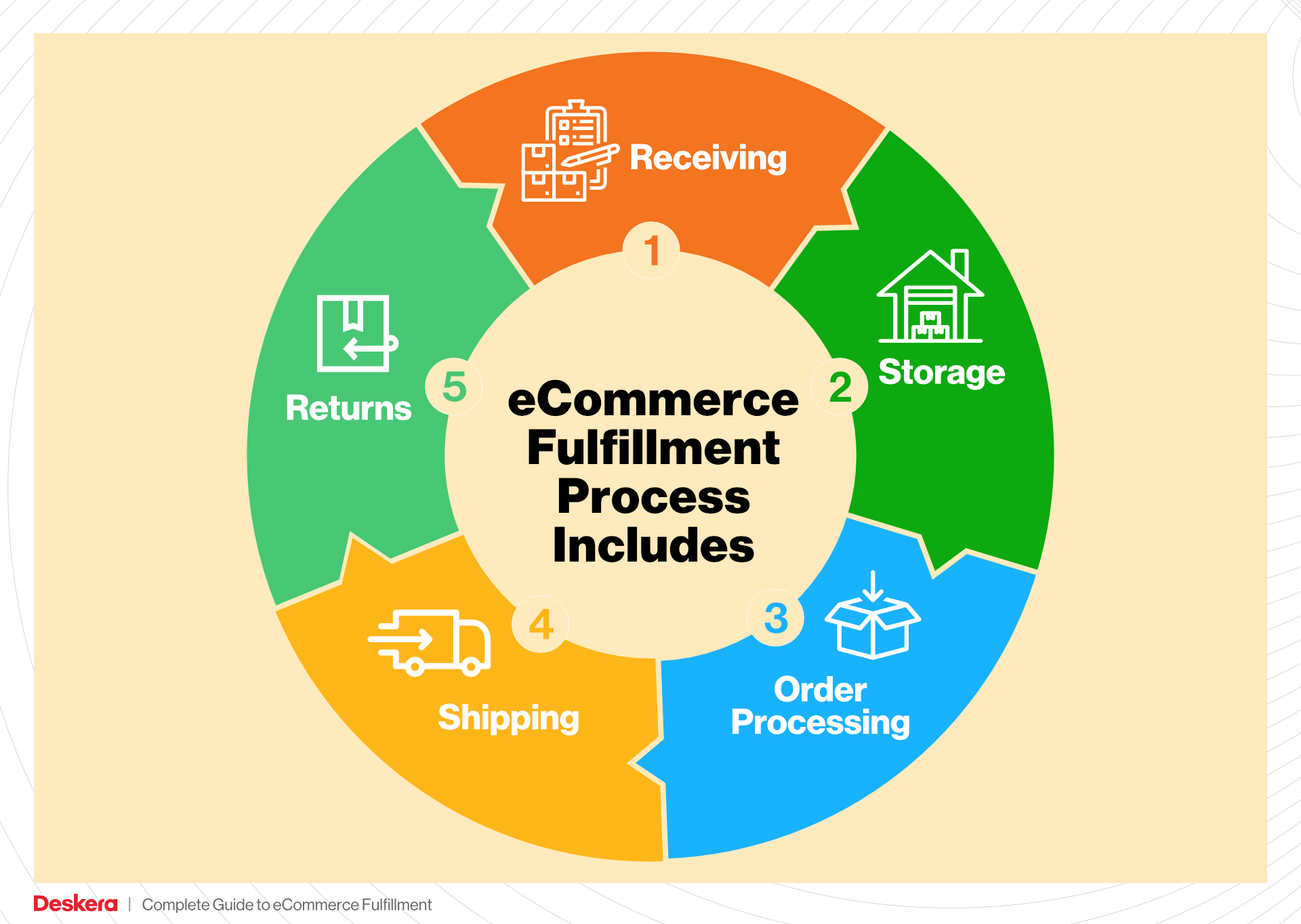
The ultimate goal of this guide is to empower you—business owners, operations managers, and entrepreneurs—to make informed decisions about your logistics. By understanding the intricacies of e-commerce fulfillment, you can enhance your operational efficiency, reduce overhead costs, and improve customer satisfaction, setting your business up for sustained growth.
What You’ll Learn In This Guide
- What is E-commerce Fulfillment? An Introduction for Growing Businesses
- The Order Fulfillment Process: From ‘Buy’ Button to Customer’s Door
- Comparing Fulfillment Models: In-House vs. 3PL vs. Dropshipping
- A Deep Dive into Amazon FBA: Pros, Cons, and Who It’s For
- Core Services Offered by Fulfillment Centers
- How to Choose a Fulfillment Partner: A 6-Point Checklist
- Understanding Fulfillment Pricing: A Breakdown of Common Fees
- Frequently Asked Questions (FAQs) about Fulfillment
- Conclusion: Is Outsourcing Fulfillment the Right Move for Your Business?
- Important Disclaimer
The Order Fulfillment Process: From ‘Buy’ Button to Customer’s Door
1. Receiving Inventory
The order fulfillment process begins with the receiving of inventory at the fulfillment center. Upon arrival, products are unloaded and inspected to ensure they match the purchase order specifications. This step is crucial for maintaining inventory accuracy and preventing future issues in order processing.
During this phase, each item is assigned a Stock Keeping Unit (SKU), a unique identifier that helps track products throughout the supply chain. By scanning SKUs into the inventory management system, businesses can maintain real-time visibility into their stock levels, which is essential for effective inventory control and demand forecasting.
2. Warehouse Storage
Once the inventory is received and processed, it is stored in designated warehouse locations. This step is vital for optimizing space and ensuring that items can be easily accessed when orders come in. Efficient warehouse storage involves categorizing products based on various factors, including size, weight, and sales velocity.
Key terms in this phase include “bin locations” and “slotting.” Bin locations refer to specific spots in the warehouse where products are stored, while slotting is the strategic placement of items to minimize travel time during picking. This process is crucial for scaling operations, as it directly impacts the speed and efficiency of order fulfillment.
3. Order Picking
When a customer places an order, the next step is order picking. This involves retrieving the items from their storage locations based on the order details. Order picking can be done in several ways, including single order picking (one order at a time), batch picking (multiple orders at once), or wave picking (grouping orders based on shipping schedules).

A critical component of this step is the use of “pick lists,” which are generated from the order management system. These lists guide warehouse staff on which items to collect and from where. Efficient order picking is essential for minimizing lead times and ensuring that customers receive their orders promptly, which is a key driver of customer satisfaction and loyalty.
4. Order Packing
After items are picked, they move to the packing station where they are prepared for shipment. Packing is more than just placing products into boxes; it involves ensuring that items are securely packed to prevent damage during transit. This step is crucial for maintaining product quality and reducing return rates.
Key terms related to packing include “packing slips” and “shipping labels.” Packing slips provide a summary of the items included in the shipment, while shipping labels contain essential information for delivery, such as the destination address and tracking number. Effective packing processes not only enhance customer experience but also streamline the returns process, should any issues arise.
5. Shipping & Delivery
The final step in the order fulfillment process is shipping and delivery. Once packed, orders are handed over to carriers for transportation to the customer’s location. This stage is critical as it directly affects delivery times and overall customer satisfaction.
Businesses need to consider shipping options, including standard, expedited, and same-day delivery, to meet varying customer expectations. Key terms in this phase include “last-mile delivery,” which refers to the final leg of the shipping journey from a distribution center to the customer’s door. Efficient last-mile delivery strategies can significantly enhance customer satisfaction and loyalty, making it a vital area for businesses aiming to scale operations.
In summary, understanding and optimizing each of these five steps in the order fulfillment process can significantly impact an e-commerce business’s efficiency and customer satisfaction. By focusing on receiving inventory, warehouse storage, order picking, order packing, and shipping & delivery, businesses can create a seamless fulfillment experience that supports growth and profitability.
Comparing Fulfillment Models: In-House vs. 3PL vs. Dropshipping
Fulfillment Model Comparison
| Model | Who Handles Inventory | Best For (Business Stage) | Key Advantage | Key Disadvantage |
|---|---|---|---|---|
| In-House Fulfillment | The business itself | Established businesses | Complete control over inventory | High overhead costs and complexity |
| Third-Party Logistics (3PL) | External logistics provider | Growing businesses | Scalability and expertise | Less control over inventory management |
| Dropshipping | Supplier/vendor | Startups and small businesses | Low upfront investment | Lower profit margins and dependency on suppliers |
In-House Fulfillment
In-house fulfillment involves managing the entire logistics process within your own company. This model is typically best suited for established businesses that have the infrastructure and resources to handle inventory, warehousing, and shipping. Companies that opt for in-house fulfillment maintain full control over their inventory, allowing for greater flexibility in managing stock levels, customizing packaging, and ensuring quality control. This level of control can lead to a better customer experience, as businesses can react quickly to changes in demand or operational issues.
However, the key disadvantage of in-house fulfillment is the high overhead costs associated with maintaining a warehouse, hiring staff, and investing in shipping infrastructure. Additionally, as order volume increases, the complexity of operations can grow significantly, requiring more sophisticated management systems and logistics capabilities. Companies need to weigh these costs against the potential benefits of control and customer service to determine if in-house fulfillment is the right choice for their business.
Third-Party Logistics (3PL)
Third-party logistics (3PL) involves outsourcing the fulfillment process to an external provider. This model is ideal for growing businesses that want to scale their operations without the burden of managing warehousing and logistics themselves. 3PL providers offer a range of services, including inventory management, order processing, and shipping, allowing businesses to focus on core activities like marketing and product development.
One of the primary advantages of using a 3PL is scalability. As your business grows, a 3PL can easily adapt to increased order volumes without requiring significant upfront investment in infrastructure. Additionally, these providers often have established relationships with shipping carriers, which can lead to better rates and more efficient delivery options. However, the downside is that businesses may experience a loss of control over their inventory management and fulfillment processes, potentially leading to issues with order accuracy and customer satisfaction if the 3PL does not meet expectations.
Dropshipping
Dropshipping is a fulfillment model where the retailer does not hold inventory but instead relies on suppliers to ship products directly to customers. This model is particularly appealing to startups and small businesses due to its low upfront investment; businesses can sell a wide range of products without the financial burden of purchasing inventory upfront.
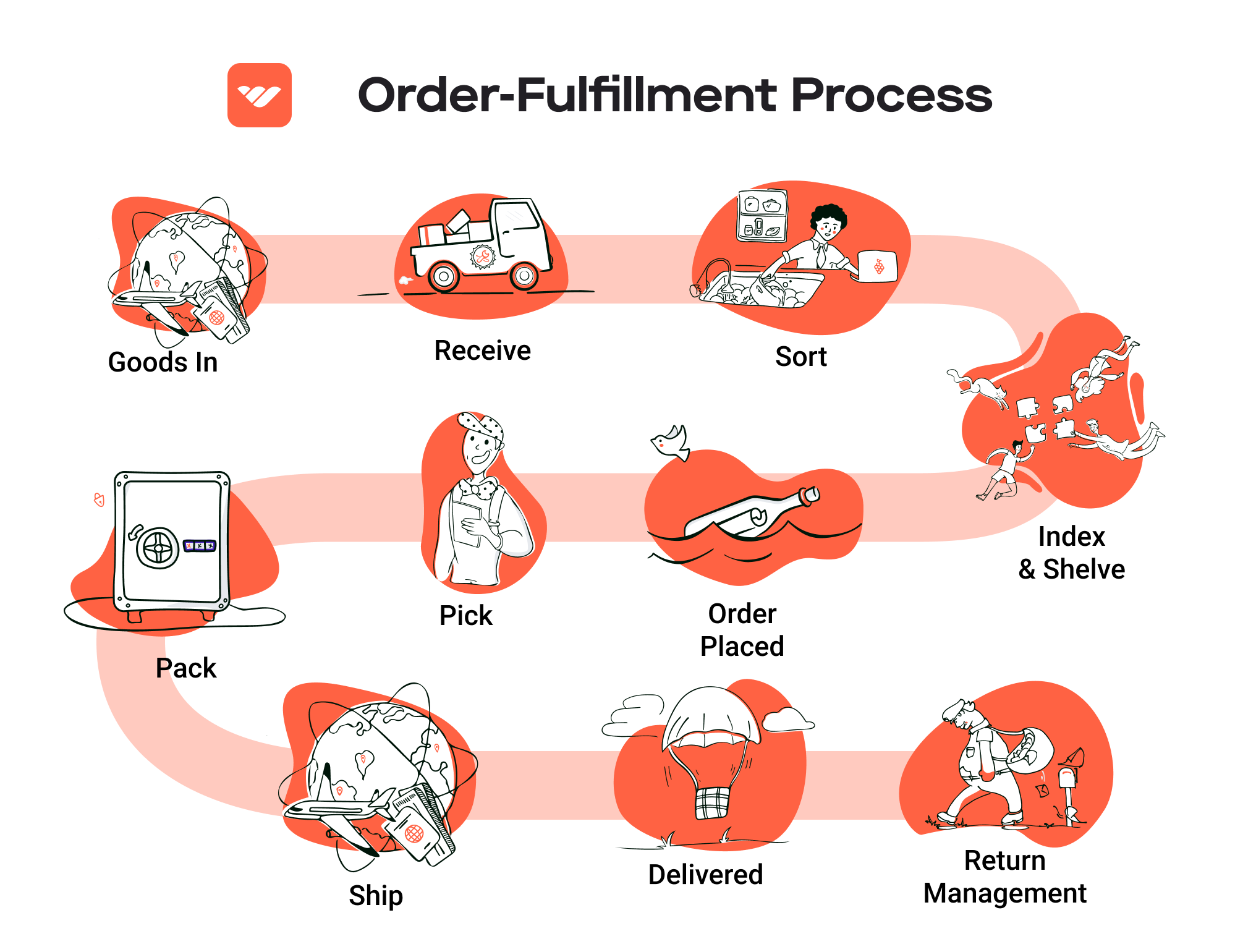
The primary advantage of dropshipping is that it allows entrepreneurs to test new products and markets with minimal risk. Since there is no need to invest in inventory, businesses can pivot quickly based on sales trends and customer feedback. However, dropshipping also comes with significant disadvantages. Profit margins can be lower than other fulfillment methods, as suppliers typically charge higher prices for their services. Additionally, reliance on third-party suppliers can lead to challenges in managing inventory levels, shipping times, and product quality, ultimately impacting customer satisfaction.
Conclusion
When selecting a fulfillment model, businesses must carefully consider their current stage, resources, and long-term goals. In-house fulfillment offers control but at a higher cost, while 3PL provides scalability and expertise but may sacrifice some control. Dropshipping presents a low-risk entry point for new businesses but can lead to lower margins and reliance on suppliers. Understanding these models will empower e-commerce business owners to make informed decisions that align with their operational strategies and growth objectives.
A Deep Dive into Amazon FBA: Pros, Cons, and Who It’s For
What is Fulfillment by Amazon (FBA)?
Fulfillment by Amazon (FBA) is a logistics service offered by Amazon that allows sellers to store their products in Amazon’s fulfillment centers. Amazon takes care of storage, packaging, and shipping on behalf of the sellers. This service enables sellers to leverage Amazon’s extensive logistics network and customer service, allowing them to focus on growing their businesses rather than managing day-to-day operations.
How FBA Works
-
Inventory Storage: Sellers send their products to Amazon’s fulfillment centers. Once received, Amazon stores the inventory and manages it within their warehouses.
-
Order Processing: When a customer places an order for a product, Amazon picks, packs, and ships the product directly to the customer.
-
Customer Service: Amazon handles customer inquiries and returns, providing support for any issues that arise during the purchase process.
-
Payment Processing: Amazon collects payment from customers and transfers the proceeds to the seller, minus applicable fees.
-
Multi-Channel Fulfillment: Sellers can also use FBA to fulfill orders from other sales channels, such as their own websites or other online marketplaces, leveraging Amazon’s logistics capabilities.
Pros of Using FBA
Prime Eligibility
One of the most significant advantages of using FBA is the eligibility for Amazon Prime. Products fulfilled by Amazon are automatically eligible for Prime shipping, which offers customers fast and free shipping options. This can significantly increase sales, as Prime members are more likely to purchase products that qualify for these shipping benefits.
Customer Trust
Amazon is a trusted brand, and customers often feel more secure purchasing items fulfilled by Amazon due to the guarantees associated with FBA. This trust can lead to higher conversion rates, as customers are more likely to buy from sellers who use Amazon’s fulfillment services, knowing they will receive their orders promptly and with reliable customer support.
Multi-Channel Fulfillment
FBA allows sellers to fulfill orders not only from Amazon but also from other platforms, such as eBay or their own e-commerce websites. This flexibility enables sellers to streamline their operations and manage inventory more effectively, regardless of where the sale occurs.
Scalability
FBA provides sellers with the infrastructure to scale their businesses without the need for additional warehousing or logistics management. As sales increase, sellers can send more inventory to Amazon’s fulfillment centers without worrying about storage or shipping logistics.
Advanced Logistics
Amazon’s sophisticated logistics network ensures efficient storage, shipping, and handling of products. Sellers benefit from Amazon’s ability to manage shipping times and costs effectively, which can lead to better overall customer satisfaction.
Cons of Using FBA
High Fees
While FBA offers numerous advantages, it also comes with a range of fees that can cut into profit margins. These fees include storage fees, fulfillment fees, and additional charges for long-term storage or special handling. Sellers must carefully evaluate whether the benefits outweigh these costs based on their sales volume and product pricing.
Strict Inventory Rules
Amazon imposes strict inventory management rules that sellers must adhere to. This includes guidelines on product packaging, labeling, and shipping processes. Failure to comply can result in additional fees or even the removal of inventory from fulfillment centers. Sellers must ensure they understand these requirements to avoid unexpected costs and disruptions.
Commingling Risks
When using FBA, sellers’ inventory may be commingled with inventory from other sellers. This can lead to issues if a customer receives a defective or damaged item that was not from the seller’s stock. While Amazon has measures in place to address this, it can still pose a risk to sellers’ reputations and customer satisfaction.
Inventory Control
Once inventory is sent to Amazon, sellers have limited control over it. If inventory is lost or damaged, sellers must rely on Amazon’s processes to resolve these issues. Additionally, sellers may find it challenging to manage their stock levels effectively, especially during peak seasons.
Who is FBA Best For?
Fulfillment by Amazon is particularly well-suited for:
-
Small to Medium-Sized Businesses: Sellers who may not have the resources or infrastructure to manage their logistics can benefit from FBA’s comprehensive services.
-
Businesses Seeking Growth: For sellers looking to scale rapidly, FBA provides the necessary logistics support without the need for significant upfront investment in warehousing or staff.
-
E-commerce Entrepreneurs: Those launching new products or brands can leverage FBA to establish credibility and reach a wider audience quickly.
-
Sellers with Seasonal Products: FBA can help manage fluctuations in demand, allowing sellers to send inventory to Amazon without worrying about long-term storage during off-peak seasons.
-
Multi-Channel Sellers: Businesses that sell across multiple platforms can streamline their fulfillment process by using FBA for all orders, improving efficiency and customer satisfaction.
In conclusion, Fulfillment by Amazon offers a powerful solution for e-commerce businesses looking to enhance their logistics and customer service. However, sellers must weigh the pros and cons carefully to determine if FBA aligns with their operational goals and financial strategies.
Core Services Offered by Fulfillment Centers
Inventory Management & Warehousing
Inventory management and warehousing are foundational services provided by fulfillment centers. This process involves storing products in a secure and organized manner, utilizing advanced inventory management systems to track stock levels, product locations, and order statuses.
What It Is:
Fulfillment centers offer large-scale warehousing solutions, where e-commerce businesses can store their products. These centers use sophisticated software to monitor inventory in real-time, ensuring that stock levels are optimized and that products are readily available for dispatch.
Benefits:
- Cost Efficiency: By outsourcing warehousing, e-commerce businesses can save on overhead costs associated with maintaining their own storage facilities. Fulfillment centers can often negotiate better shipping rates and provide bulk storage discounts, which can lead to significant savings.
- Scalability: As an e-commerce business grows, its inventory needs can fluctuate. Fulfillment centers provide the flexibility to scale inventory storage up or down based on demand, allowing businesses to respond quickly to market changes without the need for long-term commitments.
- Improved Accuracy: Advanced inventory management systems reduce the risk of human error. Automated tracking ensures that businesses have accurate, up-to-date information about their inventory levels, which is crucial for effective supply chain management.
Pick and Pack Services
Pick and pack services are essential for preparing orders for shipment. This involves selecting the right products from the warehouse (picking) and packing them appropriately for delivery (packing).
What It Is:
Fulfillment centers use efficient systems and trained personnel to pick items from shelves and pack them according to specific guidelines. This may include choosing the right box size, adding packing materials, and labeling shipments accurately.
Benefits:
- Speed: Fulfillment centers are designed to process orders quickly. Their streamlined pick and pack operations can significantly reduce order fulfillment times, leading to faster delivery for customers—a critical factor in customer satisfaction.
- Customization: Many fulfillment centers offer customizable packing options, allowing businesses to brand their packages or include marketing materials. This personalization enhances the customer experience and can lead to increased brand loyalty.
- Reduced Labor Costs: Outsourcing pick and pack services allows e-commerce businesses to avoid the costs associated with hiring and training staff for these tasks. Fulfillment centers have specialized teams that can handle these operations more efficiently.
Kitting and Assembly
Kitting and assembly services involve combining multiple products into a single package or assembling products before they are shipped to customers.
What It Is:
Fulfillment centers can take individual components and assemble them into final products or create kits that include multiple items packaged together. This is especially useful for businesses that sell products like gift sets, subscription boxes, or complex items that require assembly.
Benefits:
- Enhanced Product Offering: Kitting allows businesses to offer bundled products, which can attract customers looking for convenience or specific combinations. This can increase average order value and improve sales.
- Time Savings: By having a fulfillment center handle kitting and assembly, businesses can save time and resources that would otherwise be spent on these tasks in-house. This allows them to focus on core business activities, such as marketing and product development.
- Quality Control: Fulfillment centers typically have quality control processes in place to ensure that assembled products meet specified standards. This reduces the likelihood of errors and enhances customer satisfaction.
Returns Management (Reverse Logistics)
Returns management, also known as reverse logistics, is a critical service that handles the processing of returned items.
What It Is:
Fulfillment centers manage the entire returns process, from receiving returned products to inspecting, restocking, or disposing of items as needed. They also handle customer communications regarding returns, which can be a sensitive area for many businesses.
Benefits:
- Streamlined Process: By outsourcing returns management, businesses can ensure that returns are handled efficiently and professionally. Fulfillment centers have established processes that make it easier to manage returns, reducing customer frustration and improving satisfaction.
- Data Insights: Fulfillment centers can provide valuable analytics on return reasons, helping businesses identify trends and make informed decisions about product quality, customer preferences, or potential issues with suppliers.
- Cost Reduction: Efficient returns management can minimize losses associated with returned products. Fulfillment centers can quickly restock items that are in sellable condition, reducing the overall financial impact of returns on the business.
In conclusion, leveraging the core services of fulfillment centers—inventory management and warehousing, pick and pack services, kitting and assembly, and returns management—can significantly enhance the operational efficiency of e-commerce businesses. By outsourcing these functions, businesses can focus on growth and customer satisfaction while benefiting from the expertise and resources of specialized fulfillment providers.
How to Choose a Fulfillment Partner: A 6-Point Checklist
Location & Warehouse Network
Importance: The geographical location of your fulfillment partner’s warehouses is crucial for optimizing shipping times and costs. A strategically located fulfillment center can significantly reduce transit times to your customers, enhancing their overall shopping experience.
Questions to Ask:
– What is the location of your warehouses in relation to our primary customer base?
– How many fulfillment centers do you operate, and what regions do they cover?
– Do you have plans for expansion or additional locations in the near future?
– Can you provide insights into your shipping capabilities for different regions?
Technology & Integrations
Importance: The technology stack used by your fulfillment partner can directly impact your operational efficiency. A partner with robust technology offers seamless integration with your e-commerce platform, inventory management systems, and order processing tools, ensuring real-time visibility and accuracy.
Questions to Ask:
– What technology platforms do you use for order management and tracking?
– How do you integrate with major e-commerce platforms like Shopify, Amazon, or WooCommerce?
– Can you provide real-time inventory updates and reporting?
– What security measures are in place to protect sensitive data?
Specializations (e.g., cold storage, oversized items)
Importance: Depending on your product offerings, you may need a fulfillment partner with specific capabilities. For example, if you sell perishable goods, you need a partner with cold storage facilities. Similarly, oversized or fragile items require specialized handling.
Questions to Ask:
– What types of products do you specialize in fulfilling?
– Do you have facilities for special storage needs (e.g., temperature-controlled environments)?
– How do you handle items that require special packaging or handling?
– Can you manage returns effectively for specialized items?
Scalability & Capacity
Importance: As your business grows, your fulfillment needs will evolve. A partner must be able to scale operations efficiently to meet increasing demand without compromising service quality.
Questions to Ask:
– How do you manage seasonal spikes in order volume?
– What is your current capacity, and how can you accommodate growth?
– Do you have contingency plans for sudden increases in demand?
– Can you provide examples of how you’ve scaled for other clients?
Pricing and Contracts
Importance: Understanding the pricing structure and contract terms is essential to avoid unexpected costs. Transparency in pricing helps you assess if the partner aligns with your budget and profitability goals.
Questions to Ask:
– What are your pricing models (e.g., per order, per item, monthly fees)?
– Are there any additional fees (e.g., for storage, handling, or returns)?
– What is the length of your contracts, and what are the terms for termination?
– Can you provide a detailed breakdown of costs for different services?
Customer Support & Reviews
Importance: Exceptional customer support is vital for resolving issues promptly and maintaining a smooth operation. Additionally, reviews from other businesses can provide insights into the partner’s reliability and service quality.
Questions to Ask:
– What support channels do you offer (e.g., phone, email, chat)?
– What are your typical response times for customer inquiries?
– Can you provide references or case studies from similar businesses?
– How do you handle disputes or issues that may arise?
Conclusion
Choosing the right fulfillment partner can significantly influence your e-commerce success. By evaluating potential partners against this checklist, you can ensure that you select one that aligns with your operational needs and growth aspirations. Always remember to conduct thorough due diligence, including site visits if possible, to verify that the partner’s capabilities and culture align with your business values. A well-chosen fulfillment partner not only helps streamline your logistics but also enhances your customer satisfaction, paving the way for sustained growth in your e-commerce venture.
Understanding Fulfillment Pricing: A Breakdown of Common Fees
Initial Setup Fees
When partnering with a fulfillment center like Amazon’s FBA, businesses typically encounter initial setup fees. These fees cover the costs associated with onboarding your products into the fulfillment system. This might include account setup, product listing creation, and initial inventory processing.
The calculation of initial setup fees can vary significantly based on the complexity of your product catalog and the specific requirements of your business. For example, if you have a larger catalog or require additional services such as custom packaging, this can increase the initial costs. It’s essential to clarify what services are included in these fees upfront to avoid unexpected charges later.
Receiving Fees
Receiving fees are charged when your inventory arrives at the fulfillment center. This fee typically covers the labor and resources needed to unload, inspect, and store your products.
The calculation for receiving fees is generally based on the volume of goods being received—often measured in weight or the number of units. For instance, if you send a shipment of 1,000 units, the receiving fee might be calculated per unit or per pound. Understanding the specifics of how these fees are calculated can help you plan shipments more effectively, potentially reducing costs by consolidating shipments or adjusting quantities.
Storage Fees (per pallet/bin)
Storage fees are incurred for the space your products occupy within the fulfillment center. These fees are typically calculated on a monthly basis and can vary based on the type of storage—whether it’s pallet storage or bin storage.
For example, fees may be assessed per pallet, with rates differing based on the season or the length of time items are stored. During peak seasons, such as the holiday period, storage fees may increase due to higher demand for space. Businesses should closely monitor their inventory turnover rates to minimize storage costs and avoid incurring long-term storage fees, which can be significantly higher.
Pick & Pack Fees (per item/order)
Pick and pack fees are charged for the process of selecting items from inventory and preparing them for shipment. This fee is typically calculated on a per-item or per-order basis, depending on the fulfillment center’s pricing model.
The complexity of your orders can influence these fees. For instance, if your orders often include multiple items or require special handling (like gift wrapping or custom packaging), the pick and pack fees can increase. To manage costs effectively, businesses should aim to streamline their order fulfillment process and minimize the number of unique SKUs in a single order, which can help reduce pick and pack fees.
Shipping Fees
Shipping fees are the costs associated with sending your products from the fulfillment center to your customers. These fees can vary based on several factors, including the destination, shipping speed, and the size and weight of the package.
Shipping fees are usually calculated based on the carrier’s rates and may include a handling fee charged by the fulfillment center. Businesses should negotiate shipping rates with their fulfillment partner to ensure they are getting competitive pricing. Additionally, utilizing flat-rate shipping options or bulk shipping discounts can lead to significant savings.
Tips for Getting an Accurate Quote
To obtain an accurate quote from a fulfillment center, consider the following tips:
-
Understand Your Needs: Clearly define your business requirements, including expected order volumes, types of products, and any special handling needs. This will help the fulfillment center provide a more tailored quote.
-
Request Detailed Pricing: Ask for a breakdown of all potential fees, including those that may not be immediately apparent, such as long-term storage or surcharges during peak seasons.
-
Compare Multiple Providers: Don’t settle for the first quote you receive. Compare multiple fulfillment centers to understand the market rates and services offered.
-
Factor in Hidden Costs: Be aware of any additional costs that may arise, such as returns processing fees or inventory management charges, and include them in your overall cost analysis.
-
Negotiate Terms: Once you have gathered quotes, don’t hesitate to negotiate. Fulfillment centers may be willing to adjust pricing based on your projected volume or specific needs.
By understanding these common fulfillment pricing models and following these tips, e-commerce businesses can effectively manage their logistics costs and scale operations efficiently.
Frequently Asked Questions (FAQs) about Fulfillment
1. What is Amazon Fulfillment Center BFI3?
Amazon Fulfillment Center BFI3 is one of Amazon’s key distribution centers located in the Seattle area, specifically in Bellevue, Washington. This facility is designed to store and ship a wide variety of products sold on the Amazon platform, enabling faster delivery to customers in the surrounding regions.
2. How does fulfillment at BFI3 work?
Fulfillment at BFI3 involves receiving products from sellers, storing them in the warehouse, and managing the picking, packing, and shipping processes. When a customer places an order, the system identifies the nearest fulfillment center (like BFI3), picks the items, packs them for shipment, and dispatches them through Amazon’s logistics network.
3. What’s the difference between a warehouse and a fulfillment center?
A warehouse primarily focuses on storing goods, while a fulfillment center specializes in processing orders and shipping products directly to customers. Fulfillment centers have more advanced logistics capabilities, including inventory management, order processing, and shipping services, to ensure quicker delivery.
4. What is a 3PL (Third-Party Logistics)?
A 3PL, or Third-Party Logistics provider, is a service that allows businesses to outsource their logistics and fulfillment operations. This includes warehousing, inventory management, order processing, and shipping. Utilizing a 3PL can help e-commerce businesses scale operations without the need for extensive in-house logistics resources.
5. How much do fulfillment services cost?
Fulfillment service costs can vary significantly based on factors such as the size and weight of the products, order volume, storage fees, and additional services like packaging and returns management. On average, e-commerce businesses can expect to pay a combination of storage fees (per cubic foot), pick-and-pack fees (per order), and shipping costs.
6. What types of products can be stored at BFI3?
BFI3 can store a wide range of products, including electronics, clothing, home goods, and more. However, certain restricted items like hazardous materials or perishables may not be accepted. It’s essential to review Amazon’s guidelines for specific product categories.
7. How can I track my inventory at BFI3?
Amazon provides sellers with access to the Seller Central platform, where they can monitor inventory levels, order statuses, and fulfillment metrics in real-time. This helps businesses manage stock levels and anticipate restocking needs effectively.
8. What are the benefits of using BFI3 for my e-commerce business?
Using BFI3 can offer several advantages, including faster shipping times due to its strategic location, access to Amazon’s extensive logistics network, and the ability to scale operations without the need for additional warehousing. This can enhance customer satisfaction and potentially increase sales.
9. Can I use BFI3 if I am not an Amazon seller?
Typically, BFI3 is designed for sellers who utilize Amazon’s Fulfillment by Amazon (FBA) service. If you are not selling on Amazon, you may need to explore alternative fulfillment centers or 3PL providers that cater to non-Amazon sellers.
10. How do I get started with using BFI3 for my fulfillment needs?
To begin using BFI3, you need to register as an Amazon seller and enroll in the FBA program. Once your products are listed, you can create shipments to send your inventory to BFI3, where Amazon will handle the storage, order processing, and shipping on your behalf. Be sure to familiarize yourself with Amazon’s policies and guidelines for a smooth experience.
Conclusion: Is Outsourcing Fulfillment the Right Move for Your Business?
Assessing the Benefits of Outsourcing Fulfillment
Outsourcing fulfillment can be a transformative decision for e-commerce businesses looking to scale. One of the most significant advantages is time savings. Managing logistics in-house can consume countless hours, diverting attention from core business activities such as marketing and product development. By partnering with a fulfillment service, businesses can delegate these operational tasks, allowing them to focus on growth and customer engagement.
Scalability is another critical benefit. As your sales volume increases, your logistics needs will evolve. A reliable fulfillment partner can easily adjust to fluctuations in demand, whether you’re experiencing seasonal spikes or launching a new product line. This flexibility ensures that you can meet customer expectations without the need for substantial investments in infrastructure.
Additionally, leveraging the expertise of a fulfillment center can enhance your operational efficiency. These partners often have extensive experience in inventory management, shipping, and returns processing, as well as established relationships with carriers. This expertise can lead to improved shipping times and reduced costs, ultimately enhancing customer satisfaction and loyalty.
However, the choice of a fulfillment partner is pivotal. It’s essential to select a provider that aligns with your business values and understands your unique needs. A mismatched partnership can lead to complications that may hinder your growth.
Take Action Today
To determine if outsourcing fulfillment is the right move for your business, consider conducting a thorough audit of your current shipping processes. Assess your operational challenges, costs, and customer feedback. This evaluation can provide valuable insights into whether a fulfillment partner could streamline your operations and support your growth objectives. Don’t hesitate to reach out to potential partners to discuss how they can help you achieve your e-commerce goals effectively.
Important Disclaimer
⚠️ Important Disclaimer
The information in this guide is for educational purposes. Fulfillment services, pricing, and platform features change frequently. Always conduct your own due diligence and consult with providers directly before making business decisions.
